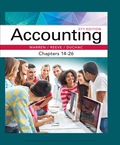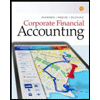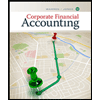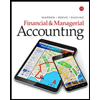
Concept explainers
Statement of
The Comparative
| Dec. 31, 20Y9 | Dec. 31, 20Y8 | |
| Assets | ||
| Cash.................................. | $ 70,720 | $ 47,940 |
| 207,230 | 188,190 | |
| Inventories............................................... | 298,520 | 289,850 |
| Investments.............................................. | 0 | 102,000 |
| Land..................................................... | 295,800 | 0 |
| Equipment................................................ | 438,600 | 358,020 |
| Accumulated |
(99,110) | (184,320) |
| Total assets............................................ | $1,211,760 | $901,680 |
| Liabilities and |
||
| Accounts payable......................................... | $ 205,700 | $194,140 |
| Accrued expenses payable................................. | 30,600 | 26,860 |
| Dividends payable....................................... | 25,500 | 20,400 |
| Common stock, $1 par..................................... | 202,000 | 102,000 |
| Paid-in capital: Excess of issue price over par—common stock...... | 354,000 | 204,000 |
| 393,960 | 354,280 | |
| Total liabilities and stockholders' equity.................. | $1,211,760 | $901,680 |
The income statement for the year ended December 31. 20Y9, is as follows:
| Sales........................................... | $2,023,898 | |
| Cost of merchandise sold........................ | 1,245,476 | |
| Gross profit..................................... | $ 778,422 | |
| Operating expenses: | ||
| Depreciation expense........................ | $ 14,790 | |
| Other operating expenses.................... | 517,299 | |
| Total operating expenses.................. | 532,089 | |
| Operating income............................... | $ 246,333 | |
| Other expenses: | ||
| Loss on sale of investments................... | (10,200) | |
| Income before income tax....................... | $ 236,133 | |
| Income tax expense............................. | 94,453 | |
| Net income..................................... | $ 141,680 |
Additional data obtained from an examination of the accounts in the ledger for 20Y9 are as follows:
a. Equipment and land were acquired for cash.
b. There were no disposals of equipment during the year.
c. The investments were sold for $91,800 cash.
d. The common stock was issued for cash.
e. There was a $102,000 debit to Retained Earnings for cash dividends declared.
Instructions
Prepare a statement of cash flows, using the direct method of presenting cash flows from operating activities.
Trending nowThis is a popular solution!

Chapter 16 Solutions
Accounting, Chapters 14-26
- Can you solve this financial accounting problem using accurate calculation methods?arrow_forwardDirect materials:475, Direct labor:385arrow_forwardBanner Electronics Corp. reported cash of $42 million at the beginning of the year, and by the end of the year, it was $38 million. The company's statement of cash flows reported cash from operating activities of $65 million and cash from investing activities of -$52 million. What amount (in $ millions) did the company report for cash from financing activities?arrow_forward
 College Accounting, Chapters 1-27AccountingISBN:9781337794756Author:HEINTZ, James A.Publisher:Cengage Learning,
College Accounting, Chapters 1-27AccountingISBN:9781337794756Author:HEINTZ, James A.Publisher:Cengage Learning, Financial Accounting: The Impact on Decision Make...AccountingISBN:9781305654174Author:Gary A. Porter, Curtis L. NortonPublisher:Cengage Learning
Financial Accounting: The Impact on Decision Make...AccountingISBN:9781305654174Author:Gary A. Porter, Curtis L. NortonPublisher:Cengage Learning Managerial AccountingAccountingISBN:9781337912020Author:Carl Warren, Ph.d. Cma William B. TaylerPublisher:South-Western College Pub
Managerial AccountingAccountingISBN:9781337912020Author:Carl Warren, Ph.d. Cma William B. TaylerPublisher:South-Western College Pub Corporate Financial AccountingAccountingISBN:9781305653535Author:Carl Warren, James M. Reeve, Jonathan DuchacPublisher:Cengage Learning
Corporate Financial AccountingAccountingISBN:9781305653535Author:Carl Warren, James M. Reeve, Jonathan DuchacPublisher:Cengage Learning Corporate Financial AccountingAccountingISBN:9781337398169Author:Carl Warren, Jeff JonesPublisher:Cengage Learning
Corporate Financial AccountingAccountingISBN:9781337398169Author:Carl Warren, Jeff JonesPublisher:Cengage Learning Financial & Managerial AccountingAccountingISBN:9781337119207Author:Carl Warren, James M. Reeve, Jonathan DuchacPublisher:Cengage Learning
Financial & Managerial AccountingAccountingISBN:9781337119207Author:Carl Warren, James M. Reeve, Jonathan DuchacPublisher:Cengage Learning





